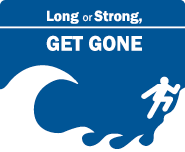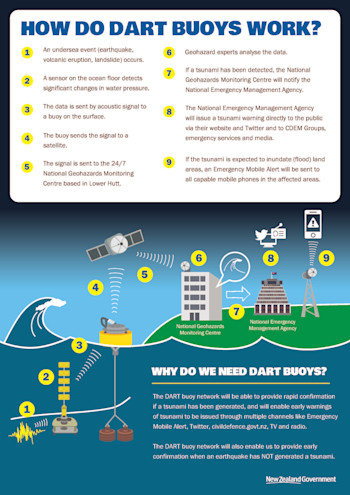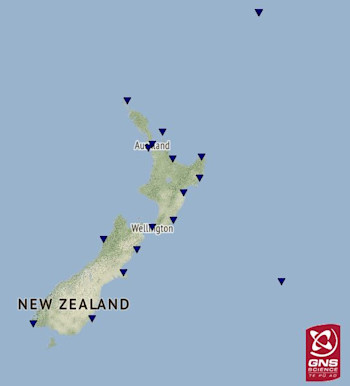
How do you know a tsunami is coming? And what should you do?
In our second story for World Tsunami Awareness Day we take a look at how we know a tsunami is coming, monitoring tools, and how you can be prepared.
So, what do you need to do?
- Know the natural warning signs for tsunami. Remember, after a long or strong earthquake, get gone.
- Know your zone. We have evacuation zones all around the country. Your regional Civil Defence Emergency Management Group has advice and links to your local maps. In a long or strong earthquake evacuate all coastal zones!
- Make a plan. Identify where you would go if you were at home with your family, at your local beach, at school or at work and practice your evacuation route. Agree on a safe meeting place with your family.
- Practise your tsunami hikoi/evacuation route.
- If you have to evacuate, stay at your safe destination until you have been given the all clear! A tsunami is a series of waves, so you could get several waves coming minutes or hours apart from each other.
How do you know a tsunami is coming?
This depends on the type of tsunami: For local sources (and maybe some regional sources), we will all need to rely on natural warning signs as there will be no time for an official warning. These are:
A long (longer than a minute) or strong (hard to stand up) earthquake. If you feel a series of earthquakes that happen over a minute or two, assume that also means a tsunami is coming. Long or strong, get gone!
Sudden retreat or upheave of the sea. If you see unusual sea conditions, like a rapid falling of sea level, possibly exposing reefs or stranded fish, leave the coast and head to higher ground!
Strange noises from the sea (past survivors have described gurgling noises or a sound like a freight train).
For distant and some regional sources, we have more time. In this case, our Tsunami Experts Panel and NEMA (National Emergency Management Agency) are alerted by the Pacific Tsunami Warning Centre or our 24/7 National Geohazards Monitoring Centre (NGMC). They have time to meet, run models to predict wave heights and arrival times and provide this to NEMA. NEMA will issue a tsunami warning or advisory if there is a threat to New Zealand, and CDEM Groups will provide local evacuation advice.
What about the big yellow buoys in the ocean?
To help our experts we now have a network of deep ocean tsunami sensors to the north of New Zealand. DART (Deep-ocean Assessment and Reporting of Tsunami) buoys are deep-ocean instruments that monitor changes in sea level. They are currently the only accurate way to rapidly confirm a tsunami has been generated before it reaches the coast.
The network of DART buoys enables better warnings by delivering data to GNS Science. The data helps scientists provide advice on whether a tsunami has been generated or not, more accurate estimates on how big the waves could be if they reach our coast and when they might reach us. The sensors are particularly valuable for monitoring potential tsunami from earthquakes in the Southwest Pacific that may be unfelt on the New Zealand mainland. The network also provides monitoring and detection information for Tokelau, Niue, the Cook Islands, Tonga and Samoa. For more information on the Dart Buoys visit the NEMA page here.
Closer to home there are tsunami gauges located around the coast of New Zealand, these are to confirm the occurrence of a tsunami and record its characteristics. The NGMC are constantly monitoring the data coming through. The GeoNet website has the latest tsunami gauge recordings for operational instruments in the region.
If you are still reading …
Ka pai you!
If you missed yesterday’s story on World Tsunami Awareness Day, you can read it here. And if you would like to learn more about tsunami, check out our ‘Ask an Expert’ video series
Also check out NEMA (National Emergency Management Agency) for information on what to do before, during and after a tsunami, and for preparing your home EQC has all the details you need.
Media enquiries: media@gns.cri.nz or 021 574 541





